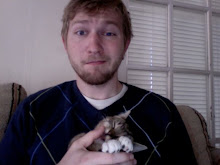I’ll admit: I have never downloaded a movie. And I probably never will. I have no ethical obligation to Hollywood’s bloated wallets. I just doubt I’ll ever upgrade my clunky laptop. So why bother? It doesn’t sound fun to me, downloading a movie. Going to the movies: that’s fun, kinda old-timey. Watching a movie: simple, direct, a close second. I’d feel like a robot to download one. And truth be told, I don’t have the patience to let a little green bar tick by at a snail’s pace so I can watch a shitty digital transfer of a probably lousy movie on a certainly outdated-by-now PC.
Saying this makes me feel old. Especially considering my generation relegated “ADD” to mood and brought “instant gratification” to everything. We were raised with movies in our homes and channel surfing in our hearts. Now we YouTube. Those kids, they grow up so fast.
Even with the HD-Blu-ray format war decided, movie collectors needn’t worry about reorganizing their shelves all over again. It’s become painfully obvious, after the diminishing interims between Betamax, Laserdisc, DVD and now, that we are programmed to forever be catching up with technology. There wouldn’t be an entertainment industry if we weren’t being bated, that golden carrot of progress dangling in front of our gawking faces.
But when VHS first took off, around the same time most Gen Xers were shrugging their way through their mothers’ wombs, it changed movies forever. The way they were watched, yes, but also the way they were made and marketed. Studios had an entirely new set of subsidiary rights, a new source of revenue. Budgets became huge and only got bigger over time: the video era ushered in big spenders like Steven Spielberg, Joel Silver, and James Cameron, who made the first $100 million movie with Terminator 2: Judgment Day (1991 [which is fucking awesome by the way, and the first R-rated movie I ever saw, thanks to video]). It had the reverse effect on the industry as well. Spider-man director Sam Raimi first turned heads with the low-budget “video nasty” Evil Dead (1981). The independently produced Blood Simple (1984) established the Coen Brothers after it got big on video.
Now, VHS tapes are only sold in dig-and-find used bins in dusty record stores. Collectors peddle valuable “first editions” on eBay (a never-played 1981 copy of Dawn of the Dead was priced at $138). With absence comes nostalgia. One good thing about our digital saturation is the return to vinyl records. Serious music fans (and I mean legions here, not just you culty types) now much prefer to buy the vinyl version of an album and download the MP3s for free. Music chains have already begun to stock up on their vinyl selection to meet the demand. Time magazine reported a 37% increase in vinyl sales since last year. Even fucking Urban Outfitters sells records now.
Patiently I wait, clutching the Ghostbusters tape that I’ve had since age 2, for a similar VHS renaissance. Why do I hold onto the faded black video box, whitened at the edges from years of shelving and re-shelving? Probably to justify my pack-rat sensibilities. Call me crazy, though, but I’d much prefer to watch my favorite movie exactly the way I fell in love with it in the first place. I know that there’s a tear in the tape during the scene where Venkman gets fired from Columbia, right at the moment when an extra walks into frame rolling some kind of red science monitor. The screen is scratchy and blank for a few seconds and then plays on. My mom doctored it with scotch tape after Clark Dyson tried to see what was inside the cassette one day. If I catch the film on TV, I wonder where that glitch went.
It’s hard not to wax poetic about the VHS experience: goofy pan-and-scan formatting, impossible rewind/fast-forward controls, that quaint tracking line. Before we had a computer in my house, we had a VCR. Like David Cronenberg’s brilliantly muddled Videodrome tells us, it won’t be computer chips in brains that will take over society, but weird, vagina-like openings in our stomachs that play obscene videos. The VCR itself seems alive, a typical Cronenbergian image. The cassette with its tape spool as hollow white eyes. The machine with that mouth, the blank expression, taunting you with a blinking digital readout of “12:00”. You put tape in, machine go “nom nom nom,” movie come on. It’s no irony that Cronenberg’s 2005 thriller A History of Violence was the last movie released on the video format; the guy just can’t seem to let go.
But we’re too savvy now for such an archaic process. Our entertainment isn’t just at our fingertips, it’s been surgically ingrained into our collective digital consciousness. Everything is so fast, so short, so high-definition that it’s become air, a long sequence of ones and zeros. True experience is irreplaceable. Like pops and hisses when the needle hits the groove. I’ll take the satisfaction of pretend-feeding my trusty VCR any day, as if a house pet that plays movies.

No comments:
Post a Comment